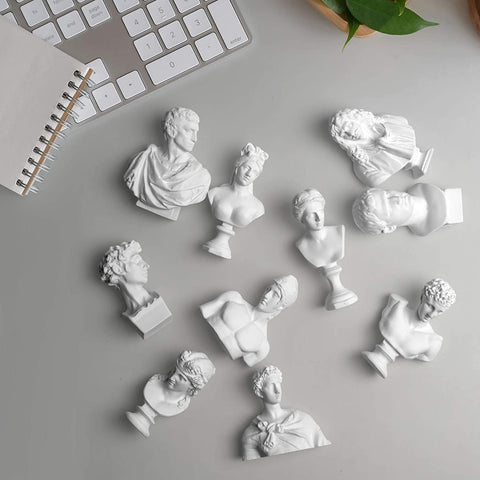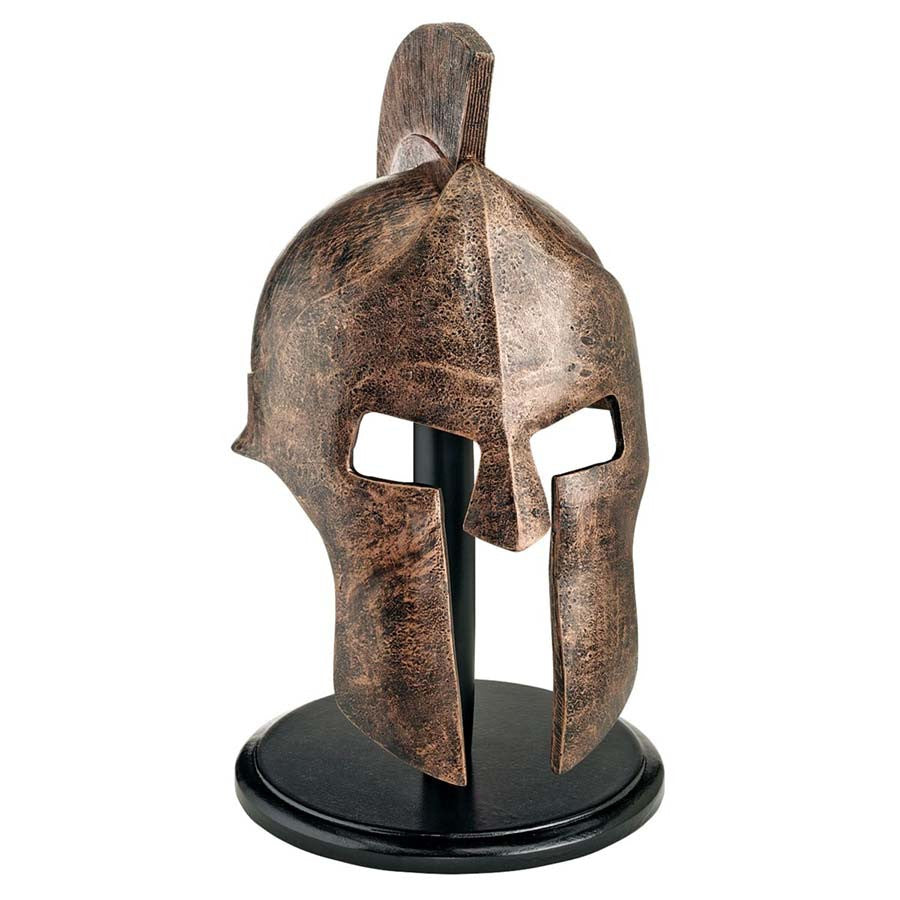Greek and Roman statues were not solely dedicated to the portrayal of mythical narratives and legendary deities; they also served as a means of paying homage to prominent individuals of the period. Typically, individuals in positions of authority, such as monarchs, kings, or, in the present instance, scholars, were known to assume such roles. The head of Aristotle in question is arguably the most well-preserved duplicate of the original Greek sculpture.
Significance of Greek and Roman Decor
It is likely that the sculpture was initially crafted using bronze as its primary material. The specific information regarding this particular sculpture remains uncertain; nonetheless, it is reputed to originate from the era of Claudius, the Roman emperor. Numerous replicas of this specific skull have been produced, although the one currently housed in Vienna is reputed to exhibit the highest degree of preservation among its counterparts.
Aristotle, renowned for his profound teachings and philosophical contributions, emerged as a very prominent figure during this age, commanding great respect and admiration. During this period, it was frequently observed that sculptures depicting him were widely distributed throughout Europe.
Greek and Roman sculptures of this nature, as well as those depicting other philosophers and educators, were frequently encountered inside the confines of university courtyards. Being the subject of a sculpture was a significant privilege. The intricate features of this sculpture are meticulously crafted and exhibit a remarkable level of realism, which is consistent with the artistic style prevalent throughout the period.
Observe the prominent furrows on the subject's forehead, commonly referred to as "thinker's lines," as well as the well-defined cheekbones that exhibit signs of aging. The oral region exhibits a small downward curvature, whereas the ocular region displays a perceptible weightiness. The aforementioned elements were crucial in conferring value on sculptures during this particular era.
The classical Greek statues of Augustus served a distinct purpose of propaganda. In contemporary understanding, Augustus is commonly regarded as the inaugural emperor; nevertheless, this designation does not align with his official title or responsibilities during his reign. (Alternatively, it constituted just one of his numerous responsibilities.)
However, following his assassination, Julius Caesar, who served as his adoptive father, was posthumously deified. The inclusion of his statue in the Pantheon signifies his elevated status among the gods. He was bodily united with the other deities of the Roman pantheon. During Augustus' lifetime, it is worth noting that this practice of deifying him was not widespread, with the exception of the Greek East, where certain communities were granted the privilege to venerate Augustus as a divine figure. Similar to the belief surrounding Egyptian pharaohs, who were regarded as semi-divine beings.
Highlights of the Roman and Greek Sculptures
The majority of statues, however, typically depict deities or individuals of great valor, like Pericles, Hercules, and Pompey.
- In ancient Rome, noble families would often display busts of their ancestors as a significant component of their ancestral veneration practices. These practices also functioned as a model for subsequent generations, but the significance of familial ties was inherently significant to an aristocratic Roman regardless.
- The Roman conquests of the Greek world resulted in triumphant military leaders appropriating numerous Greek masterpieces through acts of robbery.
- A significant number of the male athletic classical Greek statues that were devoid of clothing were created through the process of adapting Greek works, which were initially crafted in bronze, into marble sculptures.
- The disparities observed in Greek and Roman sculpture indicate that Roman artistic creations were not mere imitations but rather innovative adaptations tailored to cater to the preferences of Roman society.
- Numerous marble statues have experienced the loss of distinguishing features that would facilitate the identification of their subjects.
- Since their rediscovery during the Renaissance in Italy, a significant number of marble sculptures have undergone alterations, restoration, or even customization to cater to the preferences of collectors who favored intact figures over fragmented ones.

How these decor items can add a touch of classical elegance to modern interiors
In previous eras, mythology played a key role in aiding ancient societies in comprehending the world and commemorating its existence. Presently, there is a palpable resonance between the affective states conveyed through the portrayals of deities and the narratives associated with them.
- The extant mosaic art depicting Greek, Roman, Egyptian, and other mythological deities frequently originates from regions characterized by significant affluence, such as the soldiers wearing a spartan helmet. One can well envision a prosperous proprietor of a home in Pompeii who would have sought out exclusively the most skilled craftsmen to create his mosaics.
- The enduring appeal of ancient mythology in art has made it a widely favored option for house decoration, owing to its classical attributes. These subjects exhibit versatility and contribute a captivating aesthetic to any given environment. It is advisable to consistently incorporate mosaic art designs as a means of enhancing and harmonizing with traditional design elements in statues and mythology figurine sculptures. For example, in spaces that incorporate opulent materials such as granite and marble, there is a deliberate intention to subtly allude to the ocean, exotic locales, and refined preferences.
- One of the most notable distinctions lies in the utilization of concrete within Roman architectural practices. The material in question was widely employed in various architectural structures, and its potential origins can be traced back to potential cultural exchanges with the Far East. The origin of mortar can be traced back to its own composition.
- The depiction of the perfected human form, such as Adrianne, swiftly emerged as the most esteemed theme in Greek and Roman sculpture art, serving as the fundamental basis for a beauty standard that exerted significant influence across numerous centuries of Western artistic expression. The Hellenic concept of aesthetic perfection was firmly rooted in a system of proportions, known as a canon, that relied on the principle of the golden ratio, or the relative lengths of various bodily parts. These principles served as the guiding principles for the representation of both male and female forms.
- In the pursuit of achieving heightened realism in anatomical representations, classical art placed significant emphasis on perfect proportions. The concept of realism in art and literature expanded to include emotional and psychological realism, which effectively generated dramatic tensions and captivated the audience.
- The designs of Greek temples first exhibited simplicity and then developed into more intricate and embellished constructions. Subsequently, architects incorporated the symmetrical shape and columned façade into numerous political, educational, and religious edifices throughout the centuries, aiming to express a perception of organization and steadfastness.

How to choose the right pieces for your home
Selecting the appropriate Greek and Roman art or figure for one's residence might prove to be a somewhat challenging endeavor. The consideration of the homeowner's taste and individuality holds equal significance to the determination of a price that aligns with the budget.
Professionals in the field of interior design understand that the emotional atmosphere projected to an initial visitor in a residential setting carries significant implications for the character and disposition of the homeowner. Moreover, the emotional experience of comfort or discomfort, acceptance or disquiet, can be significantly influenced by the selection of statues or figurines inside the household.
When doing an assessment of your residential area to determine the appropriate placement of items, there are several factors that warrant consideration.
The topic at hand pertains to the concept of size.
The dimensions of Greek and Roman art are a significant factor to consider. Will the sculpture serve as the central point of focus within the area, or will it be one among other works within a collection? It is imperative to ensure that the dimensions of the sculpture are suitable for the allocated display area. When doing measurements for the space, shelf, or side table, it is imperative to use caution and attentiveness.
It is important to ensure that the size of the Greek and Roman sculpture harmonizes with the overall aesthetic of the surrounding environment and can create visual triangles. In addition to this, if the statue elicits a sense of appropriateness, one can rely on their intuitive faculties.
The concept of visual triangles
The design approach pertains to the utilization of three elements organized in a triangle configuration with the objective of establishing equilibrium and generating visual appeal within a given area. This concept can be implemented in diverse facets of home design and décor, encompassing the arrangement of furniture, artwork, and other ornamental components.
The presence of a triangle in a composition imparts a perception of stability and organization, hence facilitating the viewer's visual navigation within the given spatial arrangement. The utilization of a visual triangle might prove to be a valuable instrument in the establishment of a coherent and harmonious design within a given space. An allowance may be made for the exhibition of artwork; however, it is advisable to position the larger pieces predominantly in the central area of the collection.

The concept of artistic value
When prioritizing the objective of embellishment and the desire to evoke a sense of awe, it is advisable to seek out sculptures that possess a high degree of artistic merit rather than those crafted from costly materials. In contemporary times, a substantial number of vendors, predominantly hailing from Asia, provide statues that have been meticulously crafted from real marble.
Regrettably, the Greek and Roman statues are crafted using inexpensive materials, hence yielding a significantly diminished level of artistic merit. Another prevalent method observed in Asia involves the display of photographs depicting alternative vendors, although the resultant carving that one would obtain tends to exhibit significantly inferior quality and substantial variations.
Consequently, the reputation of the seller is one of the variables included in our list. A significant portion of our sculptural works are crafted using contemporary composite materials, enabling the production of intricately detailed statues at a reasonable cost while closely resembling their natural counterparts.














